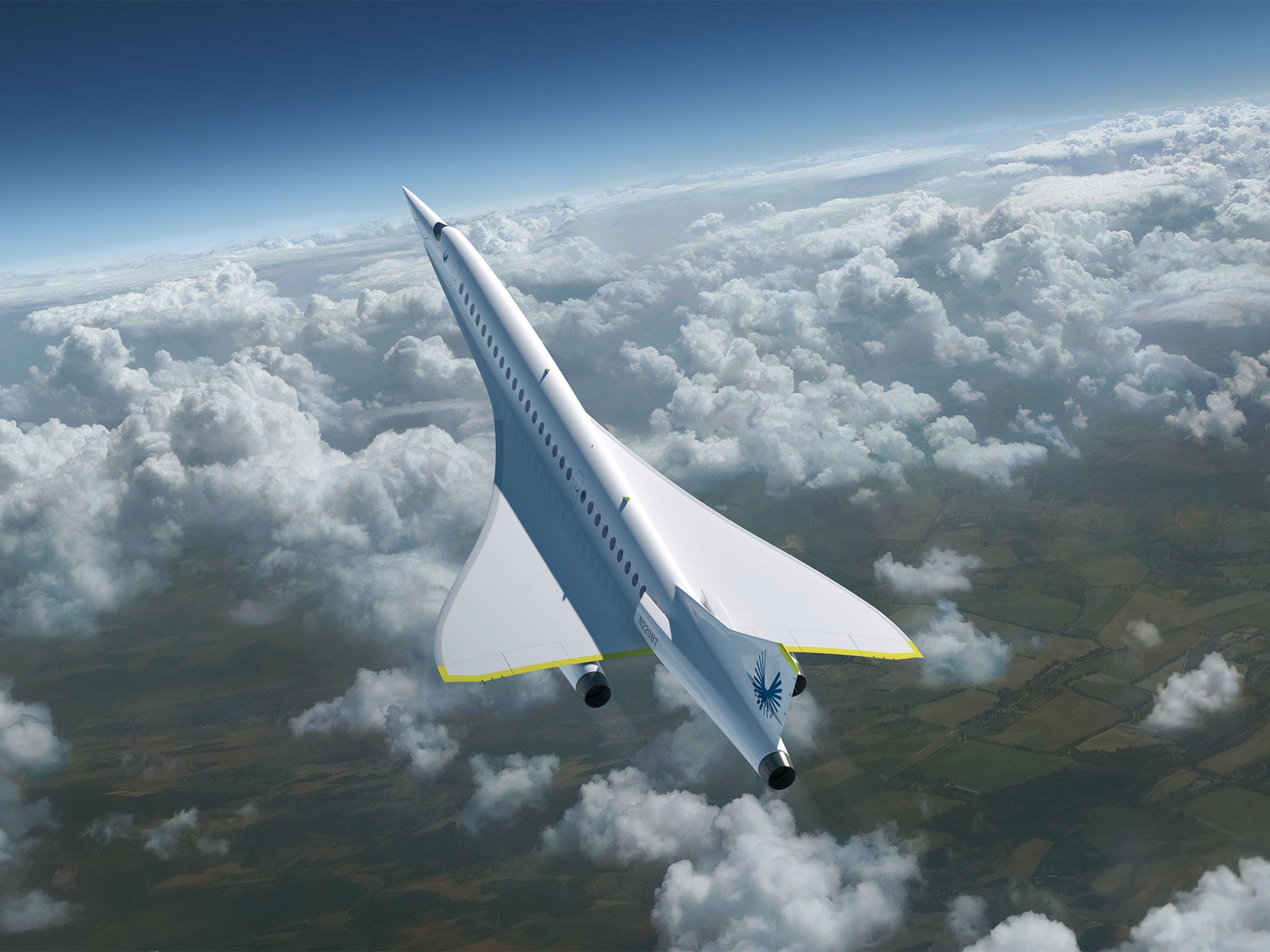Supersonic jets linking 'hundreds' of cities with ultra-fast flights will be 'affordable for all', plane maker insists
‘This is not a private jet for the ultra-wealthy ... we want to get the economy of the plane down so that anybody who flies can fly fast’
Your support helps us to tell the story
From reproductive rights to climate change to Big Tech, The Independent is on the ground when the story is developing. Whether it's investigating the financials of Elon Musk's pro-Trump PAC or producing our latest documentary, 'The A Word', which shines a light on the American women fighting for reproductive rights, we know how important it is to parse out the facts from the messaging.
At such a critical moment in US history, we need reporters on the ground. Your donation allows us to keep sending journalists to speak to both sides of the story.
The Independent is trusted by Americans across the entire political spectrum. And unlike many other quality news outlets, we choose not to lock Americans out of our reporting and analysis with paywalls. We believe quality journalism should be available to everyone, paid for by those who can afford it.
Your support makes all the difference.A supersonic jet capable of delivering passengers from London to New York in under four hours could be used to link hundreds of cities in an expansion of ultra-fast flights that would dwarf the impact of Concorde on long-haul travel, the man leading the project has said.
Ambitious plans outlined by Blake Scholl, founder and CEO of Boom Supersonic, would see the option of supersonic travel extended to vast swathes of the travelling public.
Under his projection as many as 2,000 of the planes could be used on 500 routes crisscrossing the planet.
“We are focused on accelerating long transoceanic trips,” he told The Independent from the 2018 Farnborough Airshow.
“We want to get the economy of the plane down so that anybody who flies can fly fast.”
The company is promising future fares just shy of £2,000 for a one-way ticket from London to New York – broadly comparable with existing business class seat prices on conventional subsonic aircraft.
Importantly, the journey will take three-and-a-quarter hours – halving the current journey time.
“This is not a private jet for the ultra-wealthy,” he insisted, adding that high speed travel was becoming a priority for passengers.
A demonstrator jet will take to the skies next year to test the technology before the company hopes to carry its first paying passenger in 2025.

Flight tests of the Denver, Colorado-based XB-1 prototype are to be conducted from the Mojave Air & Space Port in Southern California.
The 55-seat aircraft, which is powered by three turbojet engines, has already undergone more than 1,000 simulated wind tunnel tests.
The project already has the backing of two airlines – Virgin and Japan Airlines – with two more unnamed carriers “waiting in the wings”, but concerns remain about the financial viability of supersonic travel – and the environmental impact of ferrying people at high speed around the planet.
A study by the International Council on Clean Transportation has warned that supersonic passenger flights were unlikely to comply with existing fuel efficiency, pollution and noise standards.
The US is seeking looser standards for ultra-fast jets while European nations are pressing for tougher rules, including on noise.
But Mr Scholl rejected concerns that the new breed of aircraft would blow a hole in air and noise pollution targets.
“Concorde was a gas guzzler,” he said. “Since then there has been huge progress in engine design and materials.
“Supersonic jets don’t need to be louder than other jets; Concorde was 1960s technology.”
Boom Supersonic’s jet was “not a step backwards” environmentally, Mr Scholl added, as the fuel burn per passenger would be comparable with existing business class seats.
The jets would travel for 90-95 per cent of their routes over sea, he said, to avoid noise restrictions imposed on supersonic jets flying over land.
Comparing the pace of change in the supersonic aviation sector to developments in electric car technology, he predicted huge advances that would enable more people to fly faster for cheaper.
However, moves towards electric-powered engines were futile in the supersonic sector as batteries currently possess around 60 times less energy than jet fuel, he said.
Asked whether he was in competition with Boeing and Lockheed Martin, which have produced blueprints for aircraft operating at even higher speeds than Boom, Mr Scholl said: “You can call it a race, but it doesn’t sound like much of a race to me.”
The firm’s planes would be airborne within seven years, he said, while rival plans would not lift off for several decades.

Join our commenting forum
Join thought-provoking conversations, follow other Independent readers and see their replies
Comments